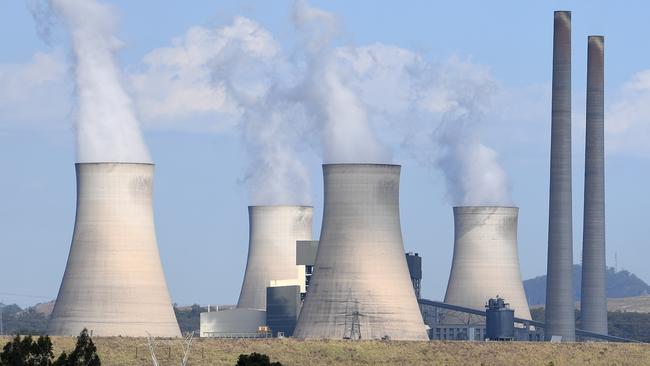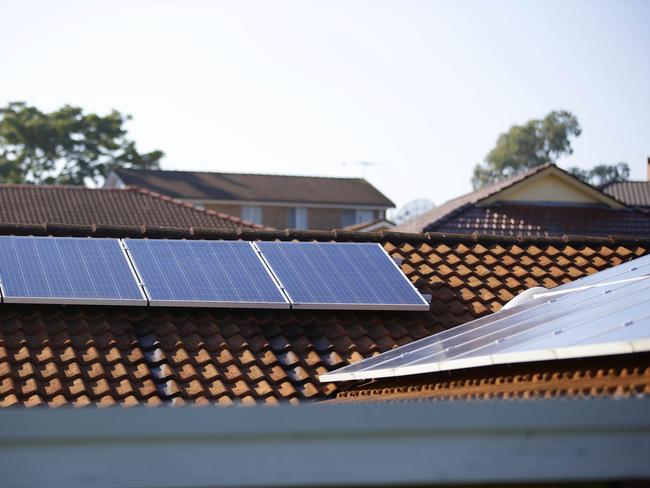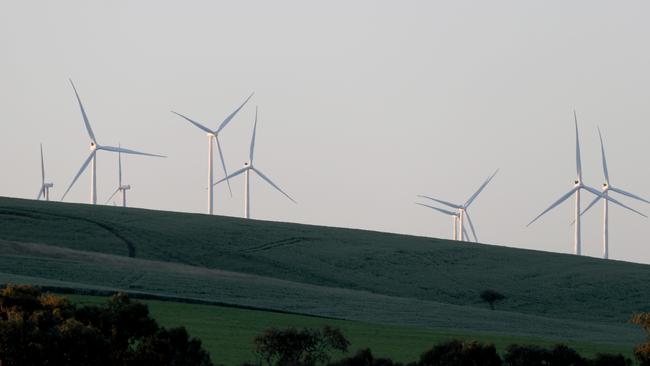Dark future ahead for coal-fired power in Australia
AUSTRALIA’S Chief Scientist has predicted a dark future ahead for coal-fired power in coming years and says the country’s not prepared.
AUSTRALIA’S reliance on coal to generate electricity will diminish as conventional power plants reach their use-by date, the country’s chief scientist says.
But the existing market is not equipped to deal with the transition and, if not addressed soon, could impact reliability and security.
Chief Scientist Alan Finkel briefed Prime Minister Malcolm Turnbull and state premiers in Hobart on Friday on his 212-page report into Australia’s electricity market.
He said Australia’s coal fleet is old and coming towards the end of its design life. He predicts generation will decline over the next 30 years.
More than three-quarters (76 per cent) of electricity produced in 2015/2016 came from coal-fired generators.
But by 2035, about 68 per cent of existing coal generating plants will have reached 50 years of age, and investors have signalled they’re unlikely to invest in new coal-fired generation.
“The existing conventional coal-fired generators are unlikely to be replaced with like-for-like generation assets,” he wrote.
Large generators are likely to be replaced by a number of smaller plants, as the cost of wind, large-scale solar, and new gas-fired generators rapidly declines. However, the existing framework “is not well suited to co-ordinating the transition ahead”.
Dr Finkel’s report found pressure could be taken off power prices and reliability of electricity improved if governments can agree on a new national energy policy.
A new policy — centred on a technologically-neutral “clean energy target” and better planning — would allow for the orderly rollout of new generation into the market to improve reliability following a series of blackouts across eastern and southern Australia.

“Participation is based on low emissions, not technology type,” Dr Finkel said in the report.
“There are no prohibitions, just incentives. It puts downward pressure on prices by bringing that new electricity generation into the market at lowest cost without prematurely displacing existing low-cost generators.”
Reliability could also be improved, and power bills pushed down, by rewarding consumers for playing their part in reducing demand and putting in place their own technologies such as battery storage and rooftop solar, he said.
It is estimated there are more than 1.44 million rooftop solar photovoltaic systems across Australia, with generation expected to rise by 350 per cent over the next 20 years.
Battery storage is expected to take off in popularity, with around 100,000 systems set to be installed nationwide by 2020.

Dr Finkel said the overwhelming message he had received while undertaking the review was a call for a “single, nationally agreed plan to manage the transition to a lower emissions economy”.
“Stakeholders argued that business as usual is not an option. Policy reversals and piecemeal government interventions undermine investor confidence,” he wrote.
Mr Turnbull has said state and federal governments will report back in August as to how Dr Finkel’s findings can be implemented.
THREE YEARS NOTICE OF CLOSURE
Dr Finkel believes power plants should give three years notice if they want to close.
He found generators were being retired with much shorter notice to the market than the time it takes for new capacity to be planned, financed and built.
“This will be problematic in the future where the retirement of large coal-fired generators could have implications for system security and reliability,” Dr Finkel said.
“The security and reliability services that these generators provide can and will be met by other means, but the transition will need to be more closely monitored and managed.”
Key to that will be obliging large generators to provide both the market operator and wider community with more notice of their intention to close. The report recommends a three-year notification period.
“This will provide time for replacement capacity to be built and for affected communities to plan for change.”
SOLAR, WIND TO GUARANTEE POWER
New sources of electricity such as wind and power would also have to guarantee a certain amount of power.
Dr Finkel believes new generators should have to guarantee they can supply electricity when needed for the duration and capacity determined for each region of the market through a new “generator reliability obligation”.
He recommends a new Energy Security Board should take control of a blueprint to ensure clean energy is rolled out in the most efficient way across the grid.
Gas would play an essential role in providing secure and reliable electricity, but this would need better oversight by the Australian Energy Market Operator as well more development of gas with proper compensation for landholders and community consultation.

NEW ENERGY TARGET
The new clean energy target — which would provide incentives to low emission generators to enter the market — would replace the existing renewable energy target from 2020, and the federal, state and territory governments would agree to a national emissions reduction trajectory.
Dr Finkel said investors in coal with carbon capture and storage technology could receive incentives under the CET.
But he expected coal-fired generation would decline over the coming three decades and new investment in it was unlikely to be made.
KEY FINDINGS AND RECOMMENDATIONS
• All governments need to agree on an emissions reduction trajectory and implement a mechanism to drive clean energy investment
• The recommended mechanism is a Clean Energy Target, the most effective way to cut emissions and support energy security/reliability
• Low emission generation like wind and gas will be incentivised but no penalties for high emission generation
• New generators obliged to ensure adequate capacity to meet consumer demand
• Big electricity generators required to give three years’ notice of closure to allow investor/community planning
• A new integrated grid plan to inform investment and ensure energy security with significant investment decisions between states or regions to be made from a system-wide perspective
• A new Energy Security Board to deliver the plan and provide oversight, reporting on performance annually
• Financial rewards for consumers for reducing demand and sharing their resources, eg rooftop solar panels.
WHAT’S NEXT FOR FINKEL PLAN?
July 2017: Next meeting of COAG Energy Council expected to agree to new Energy Security Board.
September 2017: Australian Energy Market Operator to publish a review of its summer forecast and how it is preparing for the seasonal spike in demand. The Australian Competition and Consumer Commission to publish a preliminary report into electricity supply and prices.
Mid-2018: Energy market regulation reviews completed and new reliability guarantee adopted. Australian Energy Market Operator given a last resort power to have gas-fired generators available in emergency situations. ACCC to publish final report on prices and supply.
Mid-2019: Report on workforce needs for the energy sector.
By 2020: All governments agree to a national emissions reduction strategy, taking Australia to 2050.
Mid-2020: Complexities removed to enable consumers to share their energy data and play a more informed role in energy grid.



